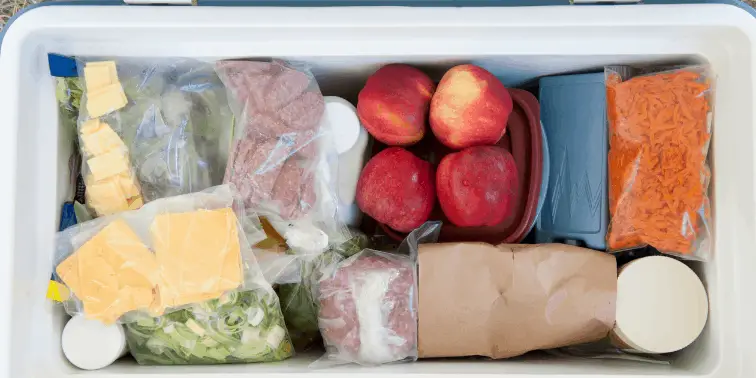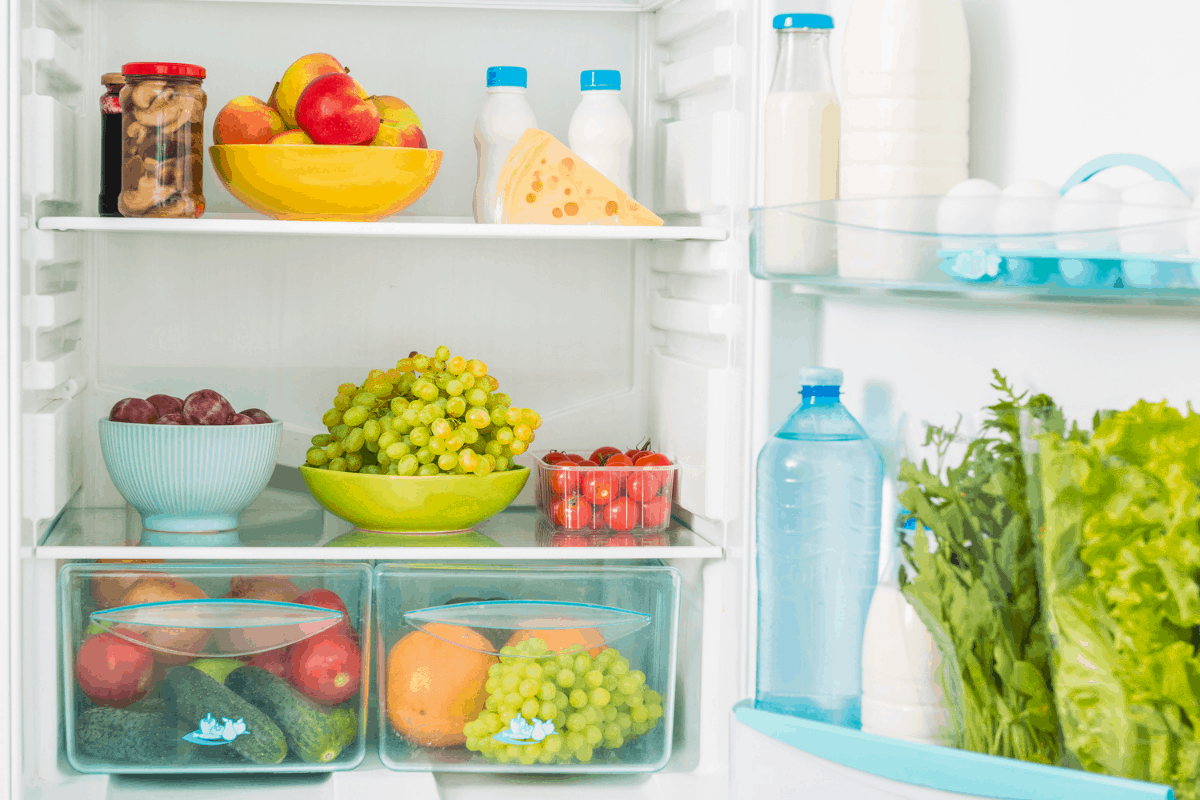Moving a fridge is a daunting, messy task. Refrigerators are expensive and bulky and require planning to fit through the door of your house.
You probably want to find ways to make moving your fridge as painless as possible. You’ve thought, perhaps you can keep the food in the fridge while you move it. It’s going right back into the refrigerator at your new house after all.
Moving a fridge with food in it doesn’t save time and, more importantly, it isn’t safe. Without refrigeration, the food inside your fridge will spoil before you’ll be able to move it and get it plugged back in. You’ll also end up with spills, damaged packaging and smashed fruit as your food is thrown about during the move.
Bottom line, you are going to want to remove the food first. But, here are some ways to move a fridge that will speed up the process.
Table of Contents
How to move a fridge
Make a moving plan
Every fridge and space is different. But fridges are often large. Measure your refrigerator and the doorways before starting any of the other steps. You might have to remove doors to get your fridge out of the house.
Remove all the food and accessories from the fridge
We’re sorry, but you can’t move a refrigerator with food in it. Shifting during moving can cause food to spill. It’s also safer to pack the food in a cooler with ice just in case there is an emergency, and you can’t have your fridge plugged in as fast as you’d like. See down below for tips on how to move food.
Don’t forget to remove ice makers and moveable shelves that can shift during moving.
Disconnect fridge
You actually might want to pull your user’s manual out for this one. Every fridge is different, and some of the cords can be confusing. Make sure you’re disconnecting all the cords, plugs, etc., correctly.
Clean and defrost the fridge

Your fridge is now empty and unplugged. Now’s a great time to give it a good clean. You can also remove frost build-up in the freezer before getting it ready to go in the truck. Ensuring the refrigerator is clean before moving it will prevent smells or mold.
Carefully transport the fridge
You’re going to want to grab your appliance or furniture dolly for this one. (see the article about different dollys here) Carefully position the dolly under the fridge and strap the fridge on if you’re using an appliance dolly. You’ll want to strap the fridge door shut as well.
Preferably with a second person, carefully move the fridge into the moving truck using the dolly. You’ll want to put it on the outside corners of the van or near the cab to balance the moving truck properly.
Keep your fridge on the side of the vehicle instead of the back near the cab if you’re planning to plug it in as soon as you arrive.
Secure fridge in place
Keep the fridge upright during the moving process. Use more straps to ensure it doesn’t shift during driving. Alternatively, place it in between other large items to further stabilize it. You may want to cover the fridge with a moving blanket if you’re worried about scratching.
Unpack the fridge
When you’ve arrived at your final destination, carefully remove the fridge from the moving truck, following the steps in reverse.
Some experts recommend waiting a couple of hours to plug the fridge in. This allows the gas in the fridge’s components to settle down after moving.
If you don’t have time (i.e., your food will go bad), go ahead and plug it in.
Because the fridge is clean and empty, it should get to cool temperatures fast.
How to pack food
We know, we know. You really want to pack your fridge with food in it. It seems so much easier. We get it. But you can’t. In the long run, it doesn’t actually save any time. The food will shift around during moving, spilling, and making a mess.
So, here’s how you should pack your perishable food.

- Use a cooler. This is the safest option for moving your fridge items. Place the food in a cooler with ice packs. Keep the items close together to retain the temperature.
- Use a box. If you don’t have a cooler handy, you can use a box for short moves. As long as your food will get in your fridge within the next two hours, you can pack them closely together like a jigsaw puzzle. Add some frozen water bottles and close the box completely.
- Keep the perishable food with you when you move. Generally, the cab or your personal vehicle is the best place for it. The back of the moving truck isn’t as well insulated and could experience more severe temperature fluctuations.
How Long Does Food last outside of the fridge
According to the USDA, you should not leave food outside the fridge for longer than two hours.
As long as your cooler is cold (below 40F), your perishable items will be as safe as they are in the fridge.
Once the ice starts to melt and the temperature rises, you’ll have the two-hour rule again. How long that takes depends on how insulated your cooler is, how warm it is, how stuffed it is (the more, the cooler it stays), and how much ice you used.
How to get rid of food you aren’t going to pack
Since you’re probably decluttering your fridge during this process, here are some ways to avoid food waste.
- Stop buying food. A few weeks before moving, stop buying food. This will, hopefully, force you to use up the food you do have in the fridge.
- Have a party. Invite neighbors, family, and friends over to enjoy a must-go meal.
- Donate food. Although most food banks don’t accept perishable food, ask around. You can also consider making meals and dropping them off to busy/pregnant moms, the elderly, or the sick, who would appreciate someone cooking for them.
- Give food away. Ask your friends, family, and neighbors if they can use any of your perishable food themselves.


